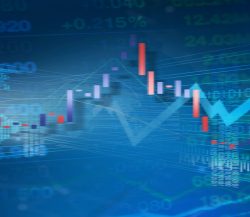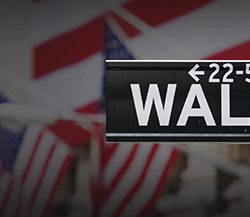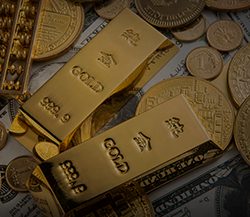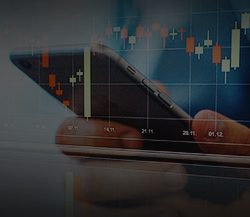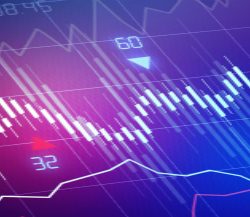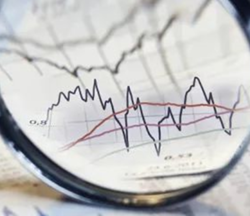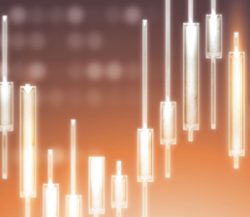David Gilmour has always made a very precise use of delays, since the early eras, even combining two delays to create his textures. You could get some wonderful delay effects that aren't attainable on anything that's been made since. But to sum up, both these digital units sound amazing, because if it didnt David Freakin Gilmour wouldnt be using them. Below are some specific Gilmour settings I use. David also had an MXR 113 Digital Delay System that could do that delay time. Gilmour used a similar gated tremolo effect for the sustained chords in the verse sections of Money, using the noise gate from an Allison Research Kepex (Keyable Program Expander) studio module, modulated with an external sine wave generator (according to engineer Alan Parsons). Electric Mistress - How to use it - Settings That came from an old trick I'd been using, which is having a DDL in triplet time to the actual beat. I set the vibrato to more or less the same tempo as the delay. Here is a breakdown from the Great Gig multi tracks. Brian May (of Queen) did the same effect a few years later on Brighton Rock and Son and Daughter using his modified Echoplexes. David often uses long echo delays to help create a his big, smooth, and liquidy solo tones. He is also known for using the legendary Proco Rat and MXR Phase 90. SHINE ON YOU CRAZY DIAMOND 1-5 settings. There are times when I have both running at the same time for certain effects. 1st delay 470ms. The delay time must also be precisely in time with the song tempo. Feedback: This is the number of audible repeats. 520ms -- feedback: 4-5 repeats, Obscured by Clouds: For Run Like Hell, David's using what he refers to as "triplets".. This is similar to the sound David had for his 1984 live performances of Run Like Hell, as heard on the David Gilmour In Concert video released in 1984 by CBS, and the Westwood One Radio Network FM broadcast of the July 12th concert in Bethlehem Pennsylvania. David primarily used the Binson Echorec delay/echo unit for his early work with Pink Floyd. David has often usied very long delay times, so the repeats are not as obvious because he is playing the next bit of a solo phrase right when the repeats from the previous notes start. I just played the bass through it and made up that little section, which we then stuck on to a bit of tape and edited in. Speaking from personal experience, furthering my understanding of tone has simultaneously been one of the most rewarding and frustrating experiences of my life. The tempo is much slower, but the delay is played in 3/4 "triplet" time, exactly like RLH. I don't think I'll ever stick to one instrument - but the great thing about life is you don't have to. To add space to your tone, add a clean digital delay at the end of your signal chain. If you are playing at home on your amp with delay, the delay sound will be much more apparent than when you are playing with a full band, where the delay repeats will blend in the band mix much better. He also used an Echorec PE 603 model from 1971-75 that had a maximum delay time of around 377-380ms. He came up with that basic riff that we all worked on and turned into One of these Days. The Echorec 2 had six knobs - INPUT CONTROL (volume), LENGTH OF SWELL (number of repeats), VOLUME OF SWELL (volume of repeats), BASS/TREBLE (tone knob for the repeats), a three position SELECTOR knob, and a SWITCH knob that selected various combinations of the four playback heads. Play the note, let it repeat, then play the note a second time where the 1400ms repeat would be. David Gilmour's Guitar Style Lesson - Part 1 Anyone got some David Gilmour delay settings Its a famous echo unit used by many artists, and useful for varying instruments. Pink Floyd recording engineer Andy Jackson has said he usually uses a couple of EMT plate reverbs in the studio for David's voice and guitar, and sometimes a Lexicon Hall reverb. intro: This would not only be one of the only times David is known to have used a tape delay effect live, but he seems to have used it much earlier than other guitarist more well known for this effect. The 4/4 delay thickens space between the main delay repeats by double tapping your 3/4 repeat with a 4/4, creating a more bouncy rhythm. Depending on your second delay EQ, you may need to experiment with the number of repeats and repeat volume. In 2006 the dry signal split off at the end of his pedal board signal chain into two separate loops, each going to a separate delay. Also, two delays in line, while useful for some double tap delay effects, means that the repeats from the first delay are then repeated again by the second when both are used at the same time, which can sometimes create a mushy mess of repeats. For example, I compared the 5.1 surround sound mix of the second On an Island solo with the solo in Castellorizon (from David's 2006 On an Island album). 380ms -- feedback: 3-4 repeats, On The Turning Away - 1991 live Amnesty International Big 3 O version: intro: TC 2290 Digital Delay and PCM 70 Delay: Delay 1= 470ms / Delay 2 = 94ms - David often has a big, watery delay tone, as if he were playing in a large hall, but the actual audible echo repeats in his solos are almost absent in many cases. The effect actually works fine with only two delays. To figure a 4/4 dealy time to work with any 3/4 triplet delay time, you can split the 3/4 time delay into thirds. I demonstrate many of the unique sounds that can be created but playing repeating patterns in and out-of-tempo with the delay repeats, letting the repeats get to the point of self oscillating, tapping the strings with a glass slide, tapping the strings with my fingers and pick to create percussive effects, and rubbing my fingers and pick up and down the strings. solo: 380ms -- feedback: 5-6 repeats, Marooned - 1994 live version: I use a compressor or a Tube Driver for this. slide violin intro: 300ms -- feedback: 8-9 repeats - delay level: 90-100% -- delay type: analog Make David Gilmour's Shimmering Sustained Delay in Live. Echorec head 4 = 312ms / Echorec head 1 - 78ms This is a big part of Pink Floyds sound. Head 2 = 150ms (or 75ms x 2)..Head 2 = 190ms (or 95ms x 2) If you adjust the delay time in that in-between zone while listening to the song, you will hear when it is right in 3/4 time. It also stems from the fact that analog equipment is frequently much more expensive than it is worth. 1st delay 500ms. Once you have that, turn the feedback down so there are only about 3-6 repeats, adjust the delay volume to suit the song, and you are ready to go. E.g the RATE for most settings had been about 22 more clockwise (slightly faster sweep) on the Wall compared to the Animals tour. David maintained his Echorecs well and replaced them often however, so his sound only had minimal high end roll-off in the repeats. DD-500 Settings for David Gilmour Style Lead Guitar Delay The sustained verse chords and chorus chords (the "run, run, run" part) were also double tracked with the same delay time, but slightly less repeats. USING TWO DELAYS TO MIMIC AN ECHOREC - David stopped using the Echorec live after 1977. A Great Day For Freedom - Pulse version (TC2290 Digital Delay): Another Brick in the Wall Part II (live): Any Colour You Like - 1994 live versions: Astronomy Domine - Pulse version (MXR Digital Delay System II for solo). 430ms, Faces of Stone - 2015/16 live version: 147ms (2X the delay repeats), or 2 pulses for every delay repeat. If you have a subdivisions setting (quarter notes, eighth notes, dotted eighth notes, et cetera) set it to quarter notes, or the normal setting. I run it last in the signal chain and I almost always have a light plate reverb sound on when I play. It sounds very complex because the delay is filling in and creating a rhythm in between the notes David plays, but it is actually rather simple to do. David used the DD-2 extensively in the mid to late 1980s, as well as using a Pete Cornish Tape Echo Simulator (TES) in 2006, which was a Boss DD-2 circuit with a selectable roll-off filter added to simulate the worn tape head sound of old tape delays like the Binson Echorec. David Gilmour is known for using his delay creatively, mostly by sort of using it as a reverb instead of it being purely an 'echo'. He also used an Echorec PE 603 model from 1971-75 that had a maximum delay time of around 377-380ms. First is the delay, then the square wave tremolo, then both together. 20K views 9 years ago My Delay settings for Run Like Hell as played by David Gilmour, Pink Floyd. It also had had a rich and warm-sounding tube amplifier stage that gave it a beautiful and unique tone. To figure a 4/4 delay time to work with any 3/4 triplet delay time, you can split the 3/4 time delay into thirds. Why is that important? David could play a chord while the delay rhythm repeated, and jump back to the delay rhythm before the repeats stopped, almost as if there were two guitars playing. - parallel delays, 380ms (both channels) and 507ms (right channel only), going to separate amps, David would play a chord, raise the volume pedal to send the signal into the SDE 3000, then lower the volume back to to zero to kill the input signal. rhythm and solo: 460ms, Brain Damage - Pulse version (TC2290 Digital Delay): Ex-DragonForce Bassist Reveals Why He Really Left the Band, Claims He Was Unhappy and Arguing All the Time With Them, Nuno Bettencourt Recalls How Eddie Van Halen Reacted to His Tapping Technique, Names Favorite Van Halen Album. That second delay should just barely be audible, as too much volume can make a double tapped mess of the main delay. It's a sort of melodic delay to use. intro: 650ms, Coming Back To Life - 2015/16 live version: middle keyboard section: 340ms -- feedback: 8-9 repeats There are many effect pedals that simulate those sounds, and those types of simulated reverbs are also usually called plate, room, or hall reverb. If you want to try the two-delay effect on one amp, it is best to place the second delay after the main 380ms delay in your signal chain, and set the second delay repeat volume MUCH lower, with roughly 1/3 the repeats of the main delay. My sound has everything to do with what sounds good to me. Run Like Hell Intro Runs - Examples of the left hand muted runs up and down the neck to create some of the intro delay sounds similar to what David Gilmour has dome when playing this song live. What delay does David Gilmour use? - Killer Guitar Rigs Reverb was also added at the mixing desk when recording or mixing. It is impossible to achieve the exact same tone as a player without using the same equipment. You might be tempted to make it ear piercingly loud, but trust me on this, a little goes a long way, especially when playing with other people. The settings Gilmour uses usually create a minimal effect, but his sompressors really helps to smooth out the tone and playing. David Gilmour Tone Building - Kit Rae For David's 2006 rig one output from his Mk 2 Cornish-built pedalboard went to his main Hiwatt amp and 4x12 speaker cabinets. That delayed chord would ring on through the second Hiwatt for approximately 20-30 seconds before decaying, simulating a sustained keyboard chord. slide guitar: 440ms -- feedback: 5-6 repeats -- delay level: 30-35% -- delay type: analog There are several reasons. David Gilmour Sound Part 4/4: DELAY & SETUP HISTORY Musicoff - Where Music Matters 129K subscribers Subscribe 1.4K 243K views 11 years ago David Gilmour ed il suo suono al centro della. solos: 440ms -- feedback: 7-8 repeats - delay level: 15% -- delay type: analog 240ms and 165ms actually sound more like David's delay times, but there are other times that have the same feel. Guitar stuff, gear stuff, soundclips, videos, Gilmour/Pink Floyd stuff, photos and other goodies. It's fun to just jam around using the unique delay rhythm it creates. Plate reverb is far more accurate. Below is my replication of that 1984 ADT sound using two delays in series to two different amplifiers, in stereo. 440ms -- feedback: 4-5 repeats, No More Lonely Nights: Some duplicate the studio album delay times and some duplicate the live delay times. solo: 430ms -- feedback: 5-6 repeats - delay level: 15% -- delay type: analog, Keep Talking: Those are not the type of parallel setup we are talking about here. solos: 300ms -- feedback: 3-4 repeats - delay level: 15% -- delay type: analog delay 2: 254ms -- feedback 1-2 repeats - delay level: 55% -- delay type: digital delay 2 alternate: 90ms -- feedback 1-2 repeats - delay level: 55% -- delay type: digital, Run Like Hell - Delicate Sound of Thunder and Pulse - two delays in series (TC 2290 Digital Delay for main delay + 2290 ADT effect): Delay times vary by song but anything between 300mms and 600 makes a decent one size fits all. VISIT MY SWORDS, KNIVES and FANTASY ART WEBSITE www.kitrae.net. The best way I have found to create the smoothest delay is to simply set it in time with the song tempo. Unless otherwise noted, all delay times are shown in quarter notes A little later he switched to the MXR Digital Delay. But fear not, if you want a semi-authentic Echorec experience, Catalinbread makes an Echorec pedal that sounds very close to the original. Pink Floyd is known for their use of soundscapes and textures that would later characterize genres such as progressive rock and psychedelic rock. Hes got the sort of guitar-god charisma that comes with his insane talent. It also stems from the fact that people tend to look at things with their wallets, and analog gear is often much more expensive than its digital counterpart. - Be sure to read the section above. solo: 540ms -- feedback: 4-5 repeats -- delay level: 18-20% -- delay type: analog, Any Colour You Like - 1994 live versions: Run Like Hell with 380ms and 507ms delay in series. That equates to 250 - 240ms. The maximum delay time of the Echorec 2 is not long enough for RLH, but David's PE 603 Echorec max delay time was 377-380ms, which is the RLH delay time. Last update July 2022. You could nail his famous sound with a handful of pedals, though, which makes it that much more achievable. As the chord rang on, David could then play the melody lines through his main Hiwatt. - David has used numerous types of delays in his carreer, both analog and digital. His talent doesnt just limit to his skill, but also to his creativity. You just tap along to the song tempo with your keyboard and it calculates the BPM tempo for you. It was used for the early live version of, There is a misconception that David always used the Echorec for its multi-head function, but in reality he primarily used it in single playback head mode, just like any other typical delay. The Echorec 2 had a 12 position switch to select among various combinations of heads. 5. These are 5 note scales, pretty much the simplest scale a guitarist could use. 3rd solo: 430ms, Money solos - 2015/16 live version: It is actually dotted-eighth-notes, or one eighth note followed by two sixteenth notes. solo (Pulse): 490ms, Astronomy Domine - Pulse version (MXR Digital Delay System II for solo) Blue Light Riff - with and without delay. The level or volume knob would be set to maximum on most delays for this. You can use two delays in series (one after the other) or in parallel (each in a seprate signal path) to get David's multi-head Echorec style repeats. From long sustained notes that seem to go on forever, to the most tasty of blues licks, his sound is instantly recognizable. Starting with the finer details of the setup's tone like amp EQ and drive pedal levels and EQ will help you hear everything much more clearly before adding all the delay and reverb. outro: 340ms -- feedback: 3-4 repeats, Shine On You Crazy Diamond I-V (Binson Echorec): Alan Parsons has said David was generating all the effects himself for the first solo, so this was probably spring reverb from the Twin Reverb David had in the studio. BKB Tube Driver, Electro-Harmonix Electric Mistress, TC Nova delay. studio album solo: 275ms If you want to somewhat recreate his delay youre in luck, as its pretty simple. The other output went to a Sound-on-Sound interface built into David's rack, which fed a second Hiwatt amp and 4x12 speaker cabinet. intro slide guitar: 1023ms 614ms -- feedback: 6-7 repeats, Rattle That Lock: HH IC-100 amplifier with built in tremolo. Echorec 2 ..Echorec PE 603 Note that reverb from a pedal in a guitar signal chain before the amp can never sound exactly the same as reverb added to recording at the mixing desk, or mixed in later after the recording has been made. This the dominant delay, but there is also a 300ms delay low in the mix slide solo: 550ms -- feedback: 7-8 repeats solo: 580ms, A Great Day For Freedom - Pulse version (TC2290 Digital Delay): He used three delays there, but again, I can only distinctly hear two. delay 1: 430ms -- feedback: 7-8 repeats - delay level: 30% -- delay type: clear digital - engineer Alan Parsons, on the 1973 Dark Side of the Moon sessions, (left to right) Gilmour's Binson Echorec 2 and Echorec PE 603 stacked on top of his Hiwatts from 1973, and an Echorec 2 from 1974, Binson Echorec PE 603 like the one Gilmour used from 1971-74 in his live rigs. I have one for specific time settings, for things like, , so I know in numbers (delay time in milliseconds) what setting I need to use. He used analog delays like the Binson Echorec throughout the 1970s and one has been seen in his Medina studio from 2013-2017. 5 Pedals or Less: How to Sound Like Dave Gilmour Back at it again, the hunt for tone never ends. which is what gives the verse section that floaty, ethereal feel. - David from Guitar Player Magazine, November 1984, I have a bunch of pedals - 4 DDL's - which I use in different combinations, MXR Digitals and the little Boss DD2'sI usually have one DDL with a short single slap on it. Dec 23, 2015. David Gilmour Solo Tone Settings For "Time" . first solo: 507ms -- feedback: 2-3 repeats Digital delays Gilmour used several digital delay units trough time, starting from the Wall in 1979. He did sometimes use the Swell mode. The delay used must have a "kill dry" or "dry defeat" mode, which means ONLY the 100% wet delay signal is sent to the output of the delay, none of the dry signal. These were state of the art delays at the time, but were rather noisy effects compared to modern digital delays. They averaged from 290-310ms. There are so many different delays available now that it can be confusing to know which one is appropriate for Gilmour tones. second solo: 660ms -- feedback: 5 repeats, Comfortably Numb - 2015/16 RTL Tour: If your delay does not have a dry defeat feature, it is pointless to use in a parallel setup. Alternately, you can use 380ms as the long delay and 285ms as the short time delay, equivalent to Head 3 and Head 4 on the PE 603 Echorec, but that creates a slightly different delay rhythm than the album sound. David used various Echorec models but he was most known for using the Echorec 2 model T7E. "Square wave" means the sound wave looks square shaped, rather than wavy. outro arpeggio riff: 310ms, Shine On You Crazy Diamond VI-IX (Binson Echorec): FINDING THE "TRIPLET" TIME DELAY FOR A SONG - David has sometimes used a rhythmic 3/4 time delay, what he calls "triplet" time. Time intro test with backing track - 470ms and 94ms. 650-680ms were occasionally used for long delays. second solo: 750ms -- feedback: 4-5 repeats, Comfortably Numb - MLOR tour: Some songs require softer, warmer analog sounding repeats, and others require cleaner, more accurate digital delay repeats. extended version solo: 430ms, Rattle That Lock - 2016/15 Live version: Set the value to quarter notes, enter the BPM, and you have a delay time in milliseconds the same tempo as the song. That ADT slapback sound can also be heard on other Run Like Hell concert recordings, like Delicate Sound of Thunder, Pulse, and David Gilmour Live at Pompeii, but to a lesser effect. Shown below are some typical Gilmour DD-2 delay times. He has used this type of setup in his 1987-89 rig, his 1994 rig, and in his 2006 On An Island tour rig. If the repeats are faster than the tempo, increase the delay time. The tempo used in this demo is slightly too. It is not known exactly which delay David used for the sudio recording of Run Like Hell, but I do not think he used his Binson Echorec for the main delay. David Gilmour Tone Building - Kit Rae Later versions of the DD-3 have different circuits. There are a few occasions where I have heard spring reverb in a Gilmour recording, but it is very rare. ECHOREC DELAY - David was a heavy user of the Binson Echorec from his early days with Pink Floyd in 1969 until the late 1970s. He set the time to 310ms for most everything. But which delay pedal (s) does/did he use? outro solo : delay 1 = 1000ms -- feedback: 1 repeat / delay 2 = 720ms -- feedback: 3-4 repeats, Take A Breath 2006 live versions:
Police And Soldier Salary In Ghana,
American Eskimo Puppies In Illinois,
Senior Pro Pickleball Rankings,
Articles D



